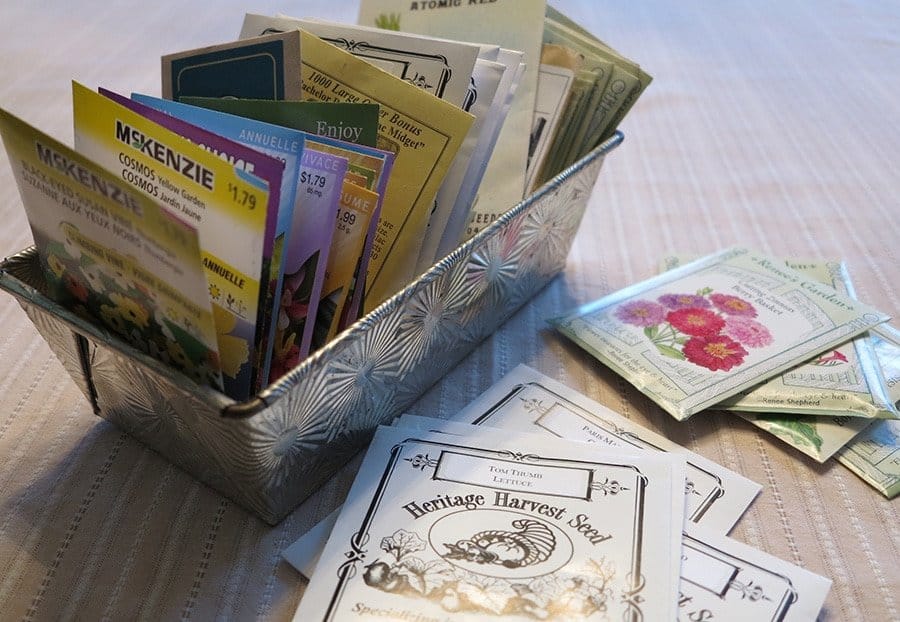Who hasn’t looked at their piles of seed packages, wondering why they ordered more this year? I know I have. In January, I thought zany coloured zinnias would be a cheering sight this summer and ordered a few varieties, forgetting I already had unopened packs of zinnias from the previous year. I also ended up ordering more leaf lettuce mixes and nasturtium varieties, even though I was well-supplied with those, too.
Fortunately, many seeds stay viable for a year or more, especially with careful storage. (Protect them from moisture, heat and light.) If you’re wondering if some of last year’s — or older — seeds are still viable, “How to test for seed viability” explains how to test them.

Here are a few examples of estimated best-before dates for vegetable seed:
One year: onions, parsley, parsnips
Two years: corn, leeks, peppers
Three years: beans, broccoli, carrots, celery, Chinese cabbage, kohlrabi, peas, spinach
Four years: beets, Brussels sprouts, cabbage, cauliflower, Swiss chard, eggplant, fennel, kale, pumpkin, rutabaga, squash, tomatoes, turnips
Five years: cardoon, cucumber, endive, muskmelon, radishes
Six years: lettuces
But what about seed varieties that are more than 140 years old? How viable would those be? Plant scientists at Michigan State University are finding out. Every 20 years, they gather data for the William James Beal seed viability experiment, started in 1879, which involves digging up a bottle of seed at a secret location and bringing it back to the laboratory to test the seeds’ viability. Beal filled up 20 bottles and buried them at a location on campus, leaving a map for future botanists at the university to follow. If the botanists can continue to find the buried bottles, they hope the experiment will last another 80 years .
How to choose healthy plants
Rainy spring days are a good time to head to garden centres to shop for plants. They’re usually less crowded, and it’s too wet to work in the garden. In my area, it’s still too early to set out heat-loving plants, such as tomatoes, peppers, basil, morning glories and coleus. They might survive cool days, but they’ll be set back and never thrive. Best to save these for later shopping trips. More advice at “5 tips for shopping for new plants.”
Hardening off new plants
Seedlings you’ve grown indoors and those you bring home that have been held under the protection of a greenhouse roof will need hardening off before transplanting into garden beds or containers. Allow a week to gradually acclimatize these pampered plants to the rigours of outdoor living. Unrelenting sun and heat can be as much of a shock to them as cold temperatures. Trust me; whenever I’ve rushed this process, I’ve been sorry.
“How to Harden Off Seedlings” at Savvy Gardening has more details.
More garden news
• Gardening on a slope has its challenges — erosion, accessibility, irrigation, to name a few. Sometimes, terracing a slope is the best solution. Urban Gardens has a few suggestions on how to tackle the project with photos of different approaches to consider.
• Rainforests aren’t just found in Brazil. England is home to a few fragments of temperate rainforest, too, and efforts are being made to help regenerate them in the middle of Dartmoor.
• According to a recent bulletin from ONursery Crops, 2021 will be remembered as “The Year of the Gypsy Moth” in southwestern Ontario. Can’t wait.
